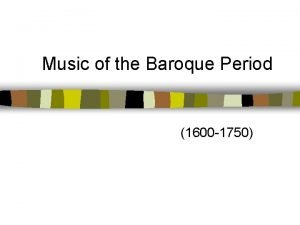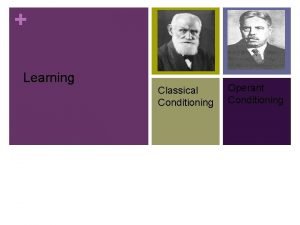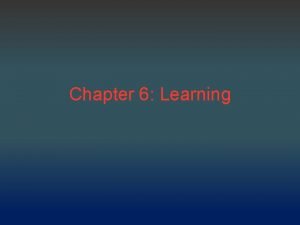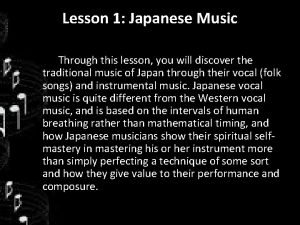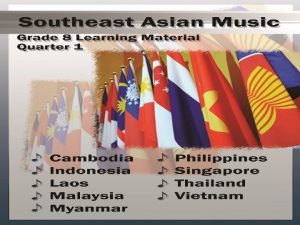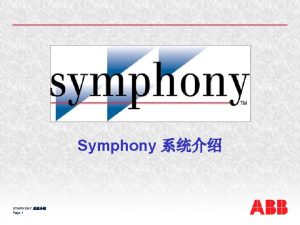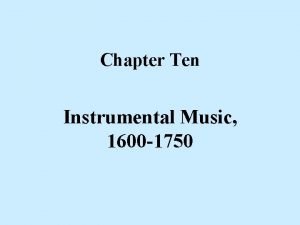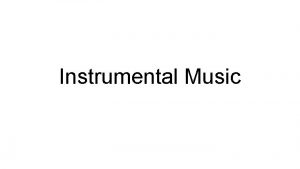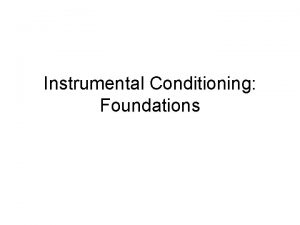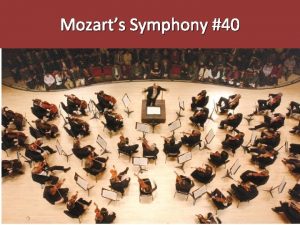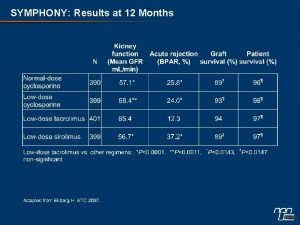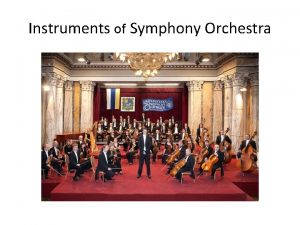Chapter 16 Classical Genres Instrumental Music The Symphony











- Slides: 11

Chapter 16: Classical Genres: Instrumental Music

The Symphony and the Symphony Orchestra • Symphony: • Origins in the sinfonia – Baroque opera overture in three sections (fast – slow – fast) – Sections expanded into movements – By mid 1700’s, a fourth movement was added (Minuet) – Fast – Slow – Minuet – Fast

The Classical Symphony Orchestra • Increased in size as the symphony orchestra moved from private court to public auditorium • More wind instruments were added to increase variety and color Classical Orchestra Strings: 1 st violins, 2 nd violins, cellos, double basses (about 27 players total Woodwinds: 2 flutes, 2 oboes, 2 clarinets, 2 bassoons Brasses: 2 French horns, 2 trumpets (for festive pieces) Percussion: 2 timpani (for festive pieces)

Mozart: Symphony No. 40 in G Minor (1788), K. 550 First Movement (Molto Allegro) p. 189 • Exposition: • Development: • Recapitulation: – Transition theme is extended – Brief coda

Mozart: Symphony No. 40 • Second Movement: Andante • Third Movement: Minuetto: Allegretto • Fourth Movement: Allegro Assai

The String Quartet • String Quartet: genre of chamber music – Created by Joseph Haydn – The German writer Goethe compared it to a conversation among four intelligent people • Two violins, viola, and cello • One player part • Follows four movement form: fast – slow – minuet – fast

Haydn: Opus 76, No. 3, The “Emperor” Quartet (1797) Second movement, Poco adagio cantabile p. 192 • Known as the “Emperor” because of its famous theme • Theme and Variations form

The Sonata • Genre of chamber music for solo piano or solo instrument accompanied by piano • Three movement: fast – slow – fast

The Concerto • Large scale, multimovement work for instrumental soloist and orchestra intended for public audience • Three movements (no minuet)

Mozart: Piano Concerto in A major (1786), First movement Allegro p. 196 • Sonata-allegro form • Double exposition: • Cadenza

Mozart: Piano Concerto in A major • Second Movement (Andante): • Third Movement (Presto)
 Enumerate the vocal music of the romantic period
Enumerate the vocal music of the romantic period Online music portfolio
Online music portfolio Basoon
Basoon Classical conditioning vs operant conditioning
Classical conditioning vs operant conditioning Instrumental learning vs classical conditioning
Instrumental learning vs classical conditioning Operant conditioning adalah
Operant conditioning adalah Classical conditioning table
Classical conditioning table Classical and operant conditioning
Classical and operant conditioning Spiritual self mastery of japanese musician
Spiritual self mastery of japanese musician The country which is known for its unique vocals
The country which is known for its unique vocals What is baroque
What is baroque Skorthom country
Skorthom country


